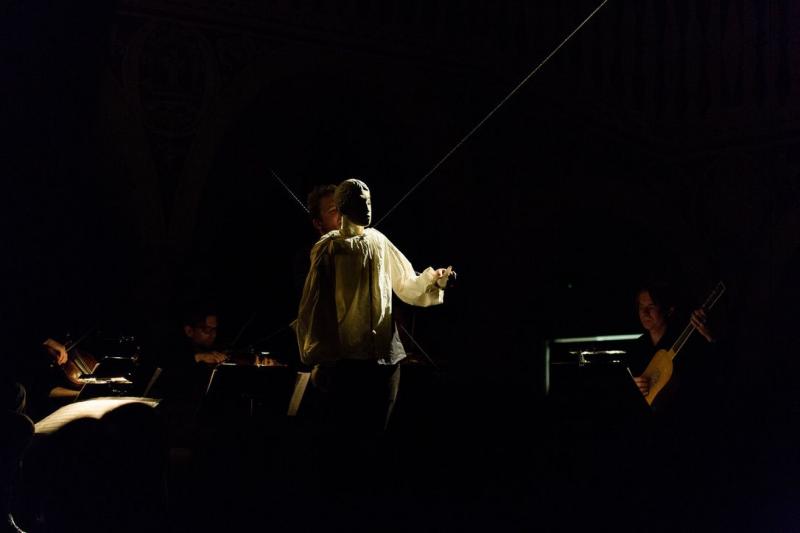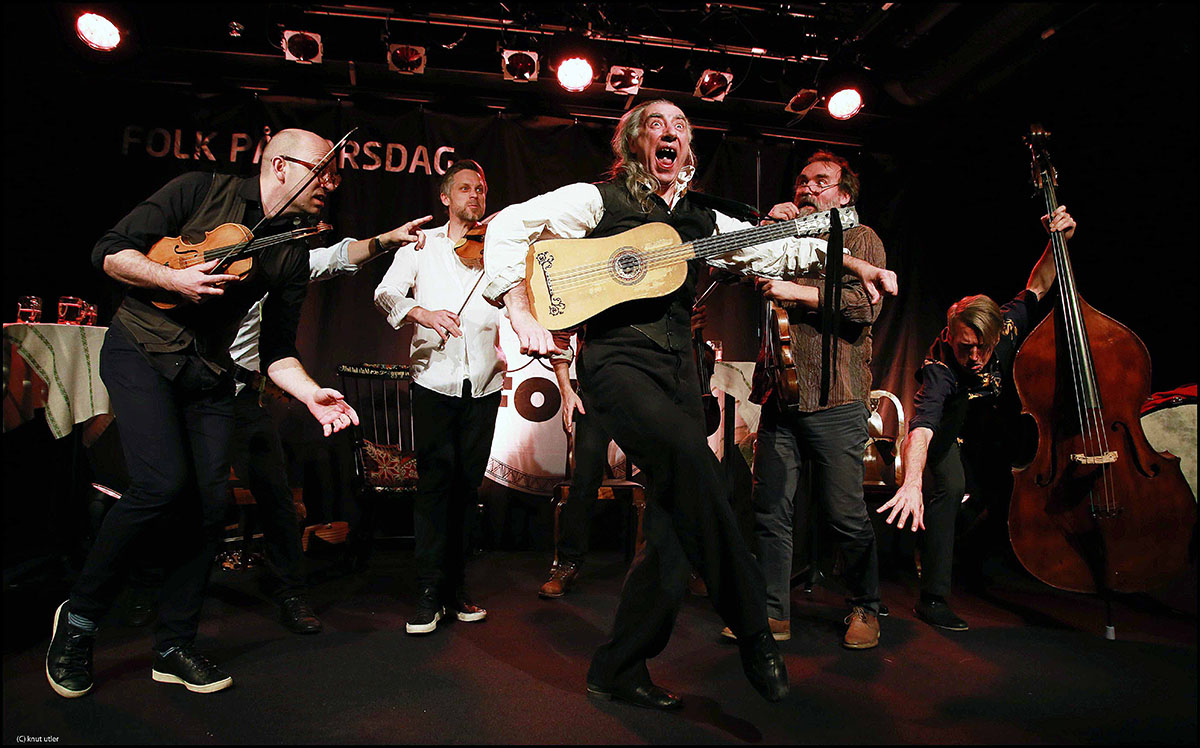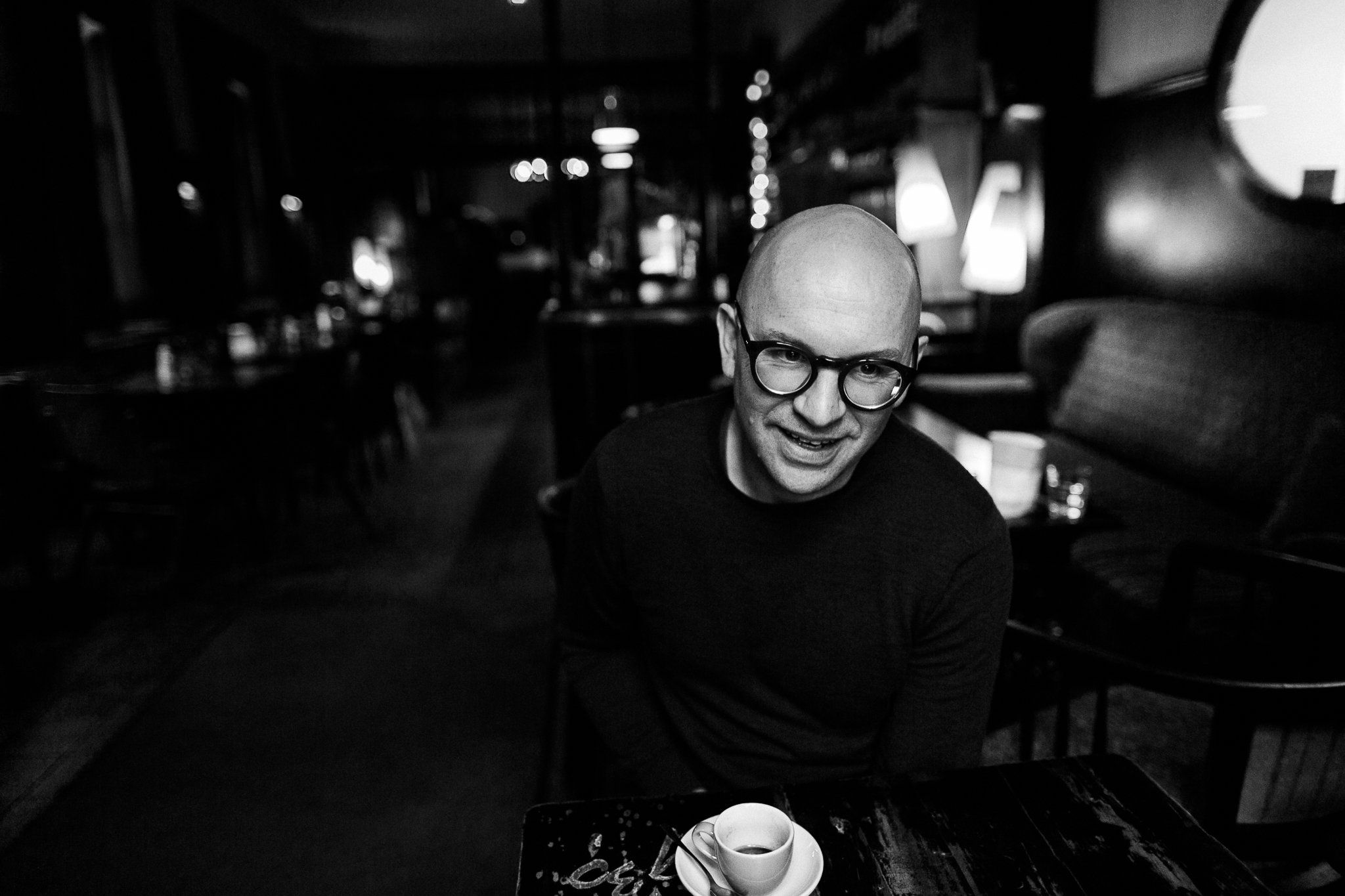Die schöne Müllerin and The Alehouse Sessions, Middle Temple Hall review - overflowing musical energy and joy | reviews, news & interviews
Die schöne Müllerin and The Alehouse Sessions, Middle Temple Hall review - overflowing musical energy and joy
Die schöne Müllerin and The Alehouse Sessions, Middle Temple Hall review - overflowing musical energy and joy
Bjarte Eike and his musicians turn 21st-century concert hall into 17th-century tavern

The world of the 17th-century tavern is a long way from the contemporary concert hall. A quick glance at the scene in paintings by Jan Steen or his contemporaries shows us a joyful tangle of men and women, dogs, cats and small children, all engaged in a riot of drinking, dancing, brawling, music-making and love-making (occasionally even napping) while hens stroll officiously across the floor pecking up crumbs. It looks noisy, dirty and a jolly good time.
There were no dogs or hens (or napping, that I could see) at Bjarte Eike’s latest Alehouse Session at the handsome Middle Temple Hall. But, as Charles I looked disapprovingly down at us from his panelled wall, there was something even more alien: that sense of spontaneous, unbuttoned, conversational music-making that we lost somewhere along the line when concert-goers morphed from individual listeners and companions to a passive, paying audience sat in silent rows.
Norwegian violinist Bjarte Eike’s project is a moveable feast. You never know what you’re going to get, and often there’s no set-list to help. So you surrender and let the group take you where they will. Songs are passed around and shared like bar-snacks; tunes by Purcell and Playford jostle with folksongs and dances, and while the setting is Cromwell’s England, where the closure of the playhouses has driven all the musicians into the alehouse, the repertoire roams freely across Europe and often beyond. The Alehouse Boys (the after-hours alter-ego of Eike’s Barokksolistene) have expanded in number since their last visit to London. The addition of Hans Knut Sveen’s Indian harmonium (imagine an accordion disguised as a sewing machine), Judith-Maria Blomsterberg’s cello and – most strikingly – Slovak violinist and singer Milos Valent, changes the flavour of the band, giving us welcome new rasp as well as richness.
The Alehouse Boys (the after-hours alter-ego of Eike’s Barokksolistene) have expanded in number since their last visit to London. The addition of Hans Knut Sveen’s Indian harmonium (imagine an accordion disguised as a sewing machine), Judith-Maria Blomsterberg’s cello and – most strikingly – Slovak violinist and singer Milos Valent, changes the flavour of the band, giving us welcome new rasp as well as richness.
At the centre, though, is the charismatic Eike, whose fiddle can turn on a dime. One moment we’re craning forwards to hear the lightest whisper of a lullaby, the next we’re pinned back by a flurry of riotous semiquavers and riotous, stamping dance. Like jazz, the music passes between players, each stepping out of the texture in turn.
The Spanish Set (“It’s called the Spanish Set because it contains three English dances," Eike quipped) gave us a swaggering extended solo from guitarist Fredrik Bock, while violist Per Buhre stopped clocks and hearts for a moment with the simplicity of his “My Love is Like a Red Red Rose”. A riotous rendition of “The Raggle Taggle Gypsies” (complete with guitar-horse and Monty Python-style galloping) saw soprano Mary Bevan plucked from the audience for a gorgeous cameo, while Valent’s two songs found an astringent beauty and heightened drama we can lose in the studied, off-the-cuff ease of these performances.
But before we could kick off our shoes at the tavern, the group offered us a first-half lay-over in the 19th century with Schubert’s Die schöne Müllerin. But rather than cage a story noisy with brooks and mill-wheels, bright with flowers and woods in the salon, this account (complete with tree, branches stretched out over the performers) seemed made for village green. Baritone Thomas Guthrie (pictured above) – a longstanding member of Eike’s group – was soloist, director and arranger of a dramatised version of the cycle that not only framed it with spoken Prologue, Epilogue and interjections (whose winsome rhyming couplets quickly palled) but also staged it complete with two actors (Sean Garrett and Rhiannon Harper Rafferty) and a puppet Miller-Boy.
Baritone Thomas Guthrie (pictured above) – a longstanding member of Eike’s group – was soloist, director and arranger of a dramatised version of the cycle that not only framed it with spoken Prologue, Epilogue and interjections (whose winsome rhyming couplets quickly palled) but also staged it complete with two actors (Sean Garrett and Rhiannon Harper Rafferty) and a puppet Miller-Boy.
There’s a lot going on in Guthrie’s account. Do we really need all the elements? It does feel like diminishing returns, overloading these slight songs with too much stage fuss and faff while neglecting some of the care that, in a traditional performance, can conjure worlds from a tiny inflection of vocal tone or articulation. But the arrangement for Eike and the Barokksolistene is superb – a fusion of folk, soundtrack and even jazz that finds unexpected new accents and colours in the familiar cycle.
A good group makes it fun for the audience, but a really great one manages to have fun themselves while doing it. I can’t think of players I’ve seen recently enjoying their job more obviously or generously than this. One concert, taken twice a month, could see us all through a long winter.
rating
Explore topics
Share this article
The future of Arts Journalism
You can stop theartsdesk.com closing!
We urgently need financing to survive. Our fundraising drive has thus far raised £49,000 but we need to reach £100,000 or we will be forced to close. Please contribute here: https://gofund.me/c3f6033d
And if you can forward this information to anyone who might assist, we’d be grateful.

Subscribe to theartsdesk.com
Thank you for continuing to read our work on theartsdesk.com. For unlimited access to every article in its entirety, including our archive of more than 15,000 pieces, we're asking for £5 per month or £40 per year. We feel it's a very good deal, and hope you do too.
To take a subscription now simply click here.
And if you're looking for that extra gift for a friend or family member, why not treat them to a theartsdesk.com gift subscription?
more Classical music
 BBC Proms: Barruk, Norwegian Chamber Orchestra, Kuusisto review - vague incantations, precise laments
First-half mix of Sámi songs and string things falters, but Shostakovich scours the soul
BBC Proms: Barruk, Norwegian Chamber Orchestra, Kuusisto review - vague incantations, precise laments
First-half mix of Sámi songs and string things falters, but Shostakovich scours the soul
 BBC Proms: Alexander’s Feast, Irish Baroque Orchestra, Whelan review - rapturous Handel fills the space
Pure joy, with a touch of introspection, from a great ensemble and three superb soloists
BBC Proms: Alexander’s Feast, Irish Baroque Orchestra, Whelan review - rapturous Handel fills the space
Pure joy, with a touch of introspection, from a great ensemble and three superb soloists
 BBC Proms: Moore, LSO, Bancroft review - the freshness of morning wind and brass
English concert band music...and an outlier
BBC Proms: Moore, LSO, Bancroft review - the freshness of morning wind and brass
English concert band music...and an outlier
 Willis-Sørensen, Ukrainian Freedom Orchestra, Wilson, Cadogan Hall review - romantic resilience
Passion, and polish, from Kyiv's musical warriors
Willis-Sørensen, Ukrainian Freedom Orchestra, Wilson, Cadogan Hall review - romantic resilience
Passion, and polish, from Kyiv's musical warriors
 BBC Proms: Faust, Gewandhausorchester Leipzig, Nelsons review - grace, then grandeur
A great fiddler lightens a dense orchestral palette
BBC Proms: Faust, Gewandhausorchester Leipzig, Nelsons review - grace, then grandeur
A great fiddler lightens a dense orchestral palette
 BBC Proms: Jansen, Royal Concertgebouw Orchestra, Mäkelä review - confirming a phenomenon
Second Prom of a great orchestra and chief conductor in waiting never puts a foot wrong
BBC Proms: Jansen, Royal Concertgebouw Orchestra, Mäkelä review - confirming a phenomenon
Second Prom of a great orchestra and chief conductor in waiting never puts a foot wrong
 BBC Proms: Royal Concertgebouw Orchestra, Mäkelä review - defiantly introverted Mahler 5 gives food for thought
Chief Conductor in Waiting has supple, nuanced chemistry with a great orchestra
BBC Proms: Royal Concertgebouw Orchestra, Mäkelä review - defiantly introverted Mahler 5 gives food for thought
Chief Conductor in Waiting has supple, nuanced chemistry with a great orchestra
 Dunedin Consort, Butt / D’Angelo, Muñoz, Edinburgh International Festival 2025 review - tedious Handel, directionless song recital
Ho-hum 'comic' cantata, and a song recital needing more than a beautiful voice
Dunedin Consort, Butt / D’Angelo, Muñoz, Edinburgh International Festival 2025 review - tedious Handel, directionless song recital
Ho-hum 'comic' cantata, and a song recital needing more than a beautiful voice
 Classical CDs: Dungeons, microtones and psychic distress
This year's big anniversary celebrated with a pair of boxes, plus clarinets, pianos and sacred music
Classical CDs: Dungeons, microtones and psychic distress
This year's big anniversary celebrated with a pair of boxes, plus clarinets, pianos and sacred music
 BBC Proms: Liu, Philharmonia, Rouvali review - fine-tuned Tchaikovsky epic
Sounds perfectly finessed in a colourful cornucopia
BBC Proms: Liu, Philharmonia, Rouvali review - fine-tuned Tchaikovsky epic
Sounds perfectly finessed in a colourful cornucopia
 BBC Proms: Suor Angelica, LSO, Pappano review - earthly passion, heavenly grief
A Sister to remember blesses Puccini's convent tragedy
BBC Proms: Suor Angelica, LSO, Pappano review - earthly passion, heavenly grief
A Sister to remember blesses Puccini's convent tragedy
 BBC Proms: A Mass of Life, BBCSO, Elder review - a subtle guide to Delius's Nietzschean masterpiece
Mark Elder held back from blasting the audience with a wall of sound
BBC Proms: A Mass of Life, BBCSO, Elder review - a subtle guide to Delius's Nietzschean masterpiece
Mark Elder held back from blasting the audience with a wall of sound

Add comment